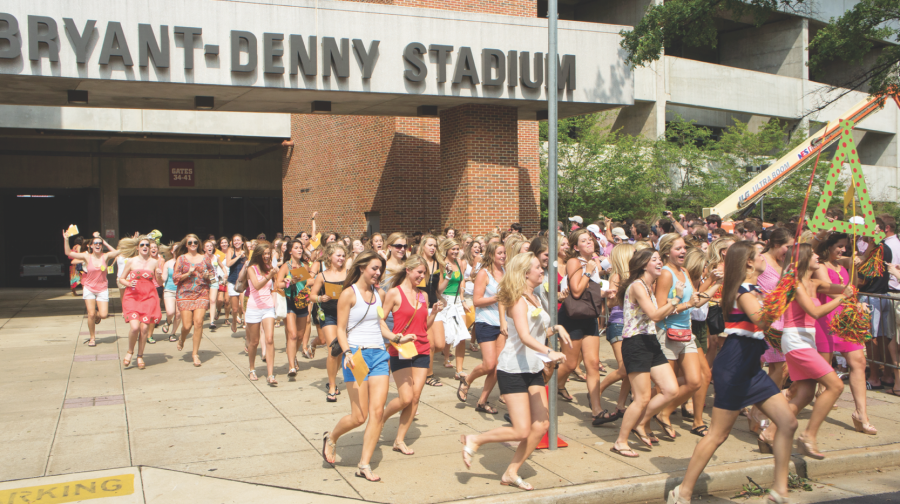As the new school year approaches, sororities at The University of Alabama are gearing up for new member selection during the fall rush week.
Kat Gillan, director of greek affairs at the University, said a total of 2,100 students are expected to participate in fall recruitment, and while UA rush week may appear to be a tradition set in stone, it actually varies in procedure among different greek systems.
“While rush, recruitment and membership intake all refer to the process by which IFC fraternities, Panhellenic sororities, as well as NPHC and the UGC multi-cultural greek organizations take new members, the processes look and feel different,” Gillan said.
The number of registered participants in recruitment has steadily increased in the past 10 years, with the exception of 2009 when numbers did not increase. Last year, the number of girls participating in rush week was around 2,000, and this year the count is expected to be even higher.
“Recruitment, which begins on Aug. 9 with Convocation and ends on Aug. 17 with Bid Day, is a nine-day process that allows prospective members the opportunity to meet women in the UA Panhellenic community,” Gillan said. “The prospective members visit their homes, hear about their philanthropic endeavors, as well as learn what being a member of sorority means to them.”
During the selection process, each organization has a set of criteria that they look for when choosing a new member.
“All sororities have a set of values that are cornerstones of their organizations,” Gillan said.
Gillan said sororities at other schools are also governed by the National Panhellenic Conference, which dictates rush procedure. She said the NPC sets forth guidelines about the structure of recruitment, when potential members can be recruited, when membership bids can be offered, the number of new members a sorority can offer bids to during each recruitment period and chapter size.
At Auburn University, recruitment begins Aug. 12 for 17 sororities, and Jill Moore, director of greek life at Auburn, said more than 1,000 rush participants are expected in 2013.
“We typically have 1,100 to 1,200 women participate in recruitment each year,” she said. “We anticipate having about that many this year as well.”
Like the main UA sorority system, Auburn’s is also governed by the same national organization, said Moore, but the similarities between the two rival universities are apparent.
“The Panhellenics at both schools are subject to the regulations of the National Pan-Hellenic [Council],” she said. “So recruitment on both campuses have many similarities with one another as well as other schools that have early fall formal recruitment. The timing and numbers might differ, but the process is outlined by NPC.”









